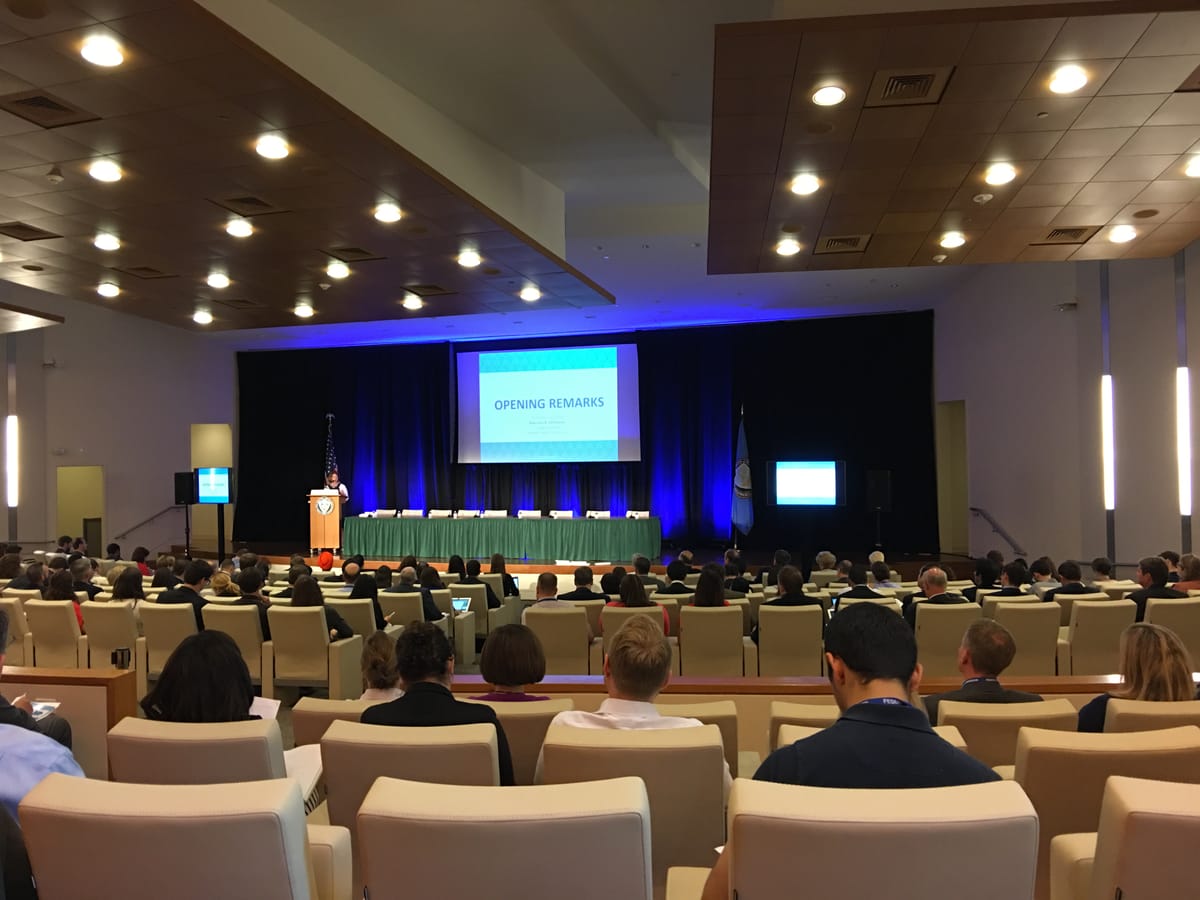Federal Trade Commission Workshop on Connected Cars Raises Issues of Data Breaches and Privacy
WASHINGTON, July 3, 2017 – Self-driving vehicles could reduce congestion, supplement public transit systems and help the elderly and disabled travel safely, said Jeffrey Massimilla, chief product cybersecurity officer of Product Cybersecurity for General Motors, at a Federal Trade Commission worksho
Casey Ryan

WASHINGTON, July 3, 2017 – Self-driving vehicles could reduce congestion, supplement public transit systems and help the elderly and disabled travel safely, said Jeffrey Massimilla, chief product cybersecurity officer of Product Cybersecurity for General Motors, at a Federal Trade Commission workshop on Wednesday.
Maureen Ohlhausen, acting chairman of the FTC, said that most new cars have connected features now, and some already use automated driving assistance. She said Uber in Pittsburgh has been using self-driving cars since September.
With the rise of connected vehicles, one important role for the FTC is to protect consumers’ personal information, she said.
“I would encourage Congress to consider data security and data breach notification legislation to strengthen the Commission’s already existing data security enforcement tools and to require companies to notify consumers when there’s a security breach,” Ohlhausen said.
Terry Shelton, acting executive director for the National Highway Traffic Safety Administration, said safety is the number one mission for the Department of Transportation and NHTSA. She said privacy is important for people to accept self-driving vehicles.
“If you’ve been around as long as I have, you know that seatbelts even were not accepted in the beginning,” Shelton said.
Shelton said vehicle technologies change lives, and self-driving vehicles are the next step. She said the NHTSA is updating its policies for the safe deployment of self-driving vehicles.
Massimilla said safety is the most important part of self-driving vehicles. He said there isn’t a question of if cyberattacks will happen but when.
Carrie Morton, who is responsible for the day-to-day operations of Mcity, a research center at the University of Michigan, said there needed to be detailed information of drivers to help insurers, such as braking habits and how often a driver will be in a rear-end collision. She also said it was important to understand the vulnerabilities that self-driving vehicles have, such as radar and camera issues.
Brian Markwalter, senior vice president of research and standards for the Consumer Technology Association, said most consumers are willing to have a tradeoff of rights and information to have a better service. He said driverless vehicles would help do away with drunk and drowsy driving.
Steven Bayless, vice president of public policy and regulatory affairs at the Intelligent Transportation Society of America, said vehicle to vehicle data will help drivers gain instant knowledge to make quick decisions. He said a signal could help drivers avoid accidents by knowing if another driver can’t break in time.
Stephen Pattison, vice president of public affairs for ARM, a microprocessor manufacturer, said that fewer people will own vehicles in the future and will just use vehicles. This could help overcome the fear of driver-owned vehicles containing personal information.
He said vehicles could also share data of where holes are in roads, and drivers will know where to avoid them. He said data shared by these vehicles could also help authorities manage traffic conditions. He said data that helps should be shared.
James Wilson, head of government relations and senior legal counsel of BlackBerry, said information from vehicles can help manufacturers, but insurance companies could refuse to help drivers depending on what data they received of the drivers.
Markwalter raised the topic of how self-driving vehicles will be updated or repaired without mechanics accidentally tinkering too much. Pattison said the software of the vehicles will have a short lifespan, and companies need to start looking at who is responsible for updating the software now.
(Photo by Casey Ryan)








Member discussion